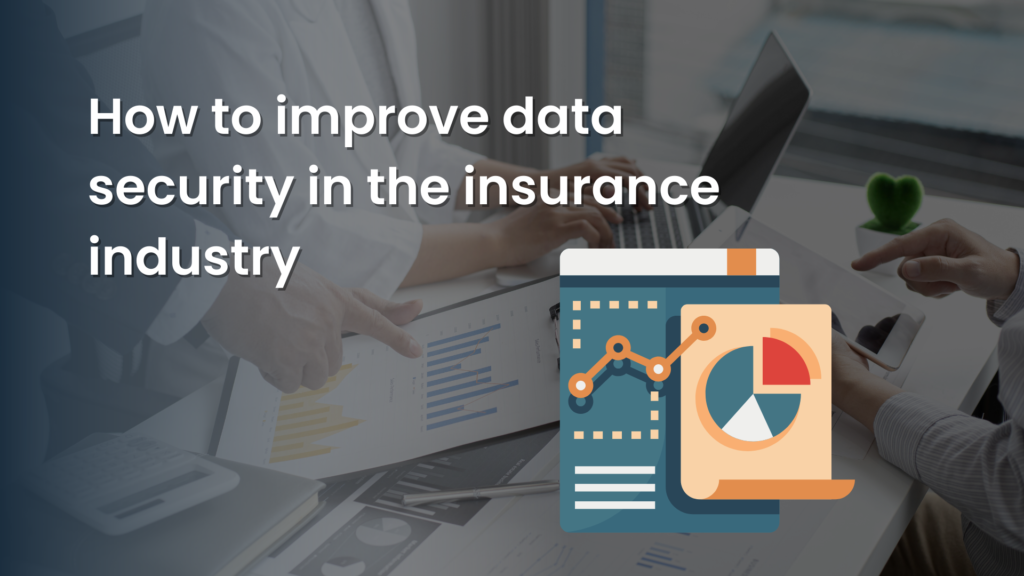CXO TECH
UPDATES
How to improve data security in the insurance industry
As we continue to thrive in a data-centric world, it is equally important to address data security concerns. With most data locations connected via the Internet in the digital age, it only takes a moment for someone with technical know-how to access private data if it is not well-protected. Particularly when financial information is involved, there is sufficient motivation to gain unauthorised access and exploit it for personal gain.

It is only fair to say that in a sector like insurance, there is no room for data security to be compromised. In the absence of robust data security, the amount of sensitive data handled by the industry, as well as their financial position and structure, can make them sitting ducks. For an insurance company, this means ensuring that its employees are trained in best practices for handling sensitive information, such as social identification numbers and bank account information related to claims. Needless to say, it also entails putting in place a watertight security net for data protection. Here’s how to be more vigilant about what happens on the Internet outside the organisation’s walls.
Installing Proper Guardrails
In the insurance industry, a breach can be avoided by using data analytics to detect flaws before they occur. Other possible actions include (but are not limited to):
Data encryption: Encryption is the process of scrambling information so that it is unreadable unless decrypted. Encrypting databases is an important data security practice. This ensures that even if those without the decryption key gain access, they cannot decipher the stored information. Key topics to cover include data encryption at rest and data encryption in transit.
Strong backup and disaster recovery strategy: Making backups of critical processes and assets is a critical way to immediately improve the company’s data security. After all, no company would ever want to be the victim of a cyber-attack and lose everything the respective teams have worked so hard to achieve. Backups should be performed on a regular basis, preferably in multiple locations and formats. It’s also critical to test backups on a regular basis to ensure they’re working properly, especially if they’ll be used for extended periods of time. Another critical aspect for an effective DR test plan is defining backup frequency in conjunction with RTO and RPO.
Comprehensive IT audit process: The regular IT audit process should include not only an audit of the data, but also of the entire process/activities carried out to secure that data. To achieve the next level of security within any organisation, the entire security strategy and procedures must be audited for various types of risks, including compliance with industry standards and regulations.
Proactively monitoring sensitive data access: To prevent unauthorised access, it’s critical to understand who has access to what and what they’re doing with it. To track who accessed the systems, when they accessed them, and what they did while in possession of confidential information, various tools can be used. Logging software can assist in recording all activity in the landscape while tracking users’ activities over time periods, as well as providing audit trails so that administrators can easily review events such as failed logins or any suspicious activity that may have occurred during business hours. In contrast, intrusion detection systems (IDS) and intrusion prevention systems (IPS) can prevent unwanted traffic from entering systems, preventing employees from transmitting data.
Why Is Fool-Proof Governance Important?
With the publication of India’s draught Data Protection Bill, security governance has taken centre stage, with a focus on customer consent, data, grievances, and rights. Customers are more aware and empowered than ever before. They are aware of the dangers of having their personal information compromised. Because the exchange of sensitive financial information is fairly standard and frequent in the insurance industry, even a minute hiccup or glitch must be avoided at all costs. Customers are looking for good data security practices as well as a good claim settlement ratio, given the recent increase in data breaches.
When it comes to strong data governance, it is not a one-time event, but rather a continuous, ongoing, and ever-improving process. This procedure is also subject to changes in the data privacy rules and regulations that the framework must follow. For example, the organisation must segregate and categorise customer data from the start of their journey, with respective teams held accountable for the data that they handle.
What makes data security so important, particularly in the insurance industry, is that it is about more than just protecting your data; it is also about protecting your customers’ trust in you and their ability to do business with you safely and securely.